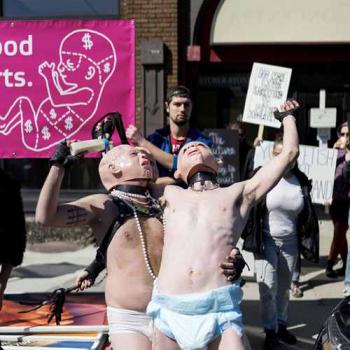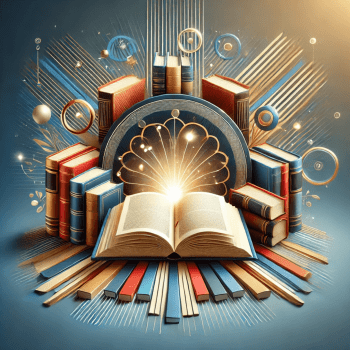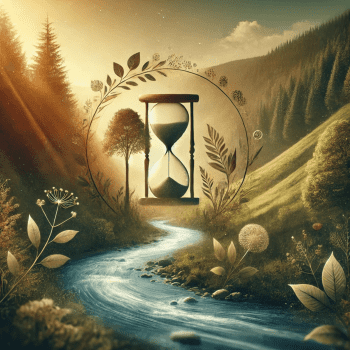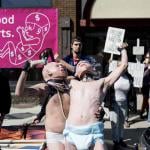Poetry and music engage us in ways beyond what can be contained in prose alone. Poetry uses language playfully to gesture beyond the more straightforward meaning of most texts, offering the possibility of breaking open fixed ideas to new possibilities. As Emily Dickinson once mused about the power of poetry:
Tell all the truth but tell it slant —
Success in Circuit lies
Too bright for our infirm Delight
The Truth’s superb surprise
As Lightning to the Children eased
With explanation kind
The Truth must dazzle gradually
Or every man be blind —
And music — with lyrics that are poetry set to a tune — can often take the power of that poetic truth told 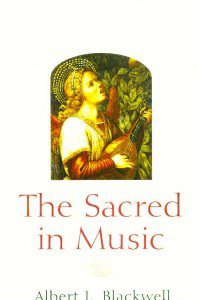 “slant” to an even higher level. As the Cambridge professor George Steiner has said, “Music is at once cerebral in the highest degree…and it is at the same time somatic, carnal and a searching out of the resonances in our bodies at levels deeper than will or consciousness…” (Blackwell, 217). Consider the full-bodied experience — all that is taken in through your eyes, ears, and body — of being in a sanctuary when an organ is playing at full volume with all the stops out, or being in a concert hall amidst the swelling climax of a symphony, or being at a rock concert in the middle of a rapturous crowd and physically feeling the sound coming from the speakers. The power and poetry of music hits us and engages us on so many levels all at once.
“slant” to an even higher level. As the Cambridge professor George Steiner has said, “Music is at once cerebral in the highest degree…and it is at the same time somatic, carnal and a searching out of the resonances in our bodies at levels deeper than will or consciousness…” (Blackwell, 217). Consider the full-bodied experience — all that is taken in through your eyes, ears, and body — of being in a sanctuary when an organ is playing at full volume with all the stops out, or being in a concert hall amidst the swelling climax of a symphony, or being at a rock concert in the middle of a rapturous crowd and physically feeling the sound coming from the speakers. The power and poetry of music hits us and engages us on so many levels all at once.
Stacy Horn, in her book Imperfect Harmony: Finding Happiness Singing with Others, explores the neurological research that is increasingly supporting what many of us who have sung in choirs already know: that singing — even alone in the shower, but especially in long group sessions like a choir — can produce a “Singer’s high,” triggering the release of neurochemicals in our brains and bodies similar to a “Runner’s high.” As the title of an article about Horn’s work says, “Join the choir. Science shows it’ll make you feel better.” Or just give yourself permission to sing robustly from the congregation during hymns; it’s good for you!
George Steiner further explores the ways in which music can also be sacramental: a way of experiencing the sacred, which is sometimes called the “depth dimension in life”: those moments when we feel fully alive, fully connected with the people and the world around us, when we are fully in the present moment and aware of the depth and richness of each instant, even as it arises and passes away to allow the next present moment to emerge.
In the Christian tradition, Saint Augustine of Hippo famously said that, “The one who sings prays twice,” which is one way of expressing the difference of speaking the words of the Roman Catholic mass aloud compared to the power of singing Bach’s Mass in B Minor. And it can perhaps help in this particular instance that the lyrics are in Latin, which can make it easier to simply let the aesthetics of the experience enrapture you without worrying too much about the word’s meaning. Or from a more humanist perspective, the 20th-century composer Mauricio Kagel says that, “musicians may not all believe in God, but they all believe in Bach” — meaning that the transformative and transporting power of great music can be intrinsically sufficient in and of itself.
And the range of music’s power — of “the sacred in music” — to energize us to exercise harder as well as to meet us where we are in our brokenness is captured beautifully in the opening stanza of Leonard Cohen’s Hallelujah:
I’ve heard there was a secret chord
That David played, and it pleased the Lord…
It goes like this
The fourth, the fifth
The minor fall, the major lift
The baffled king composing Hallelujah
“The Fourth, the fifth / The minor fall, the major lift.” Whether music is major or minor, fast or slow can make all the difference in shaping our experience.
And one practice that I invite you to consider is called audio divina. Audio divina is related to the more well known spiritual practice of lectio divina (“divine reading”), which involved reading a small portion of a text slowly and contemplatively, paying attention to any words or phrases that particularly resonate inside of you, then reflecting, drawing, or journaling about what meaning that word or phrase may have for your life. Similarly, audio divina involves deep, intentional listening to a poem read aloud or to a piece of music in which you pay attention to any lyric or musical phrase that particularly resonates with you. It often helps to re-listen to that section a few times. And then reflect on why that section in particular resonated with you and open yourself to considering what meaning might emerge between that piece of music and your life or the life of the world.
In 2012, the independent film A Late Quartet was released starring Christopher Walken, Catherine Keener, and the late Philip Seymour Hoffman. (In retrospect, it’s worth seeing for Hoffman’s performance alone.) The film is about the internal dynamics, the bonds, and the rivalry within a world-famous string quartet based in New York City preparing for their 25th anniversary concert that is complicated by the revelation that the cellist of the group has an illness that will force him to retire. The film is inspired by and built around Beethoven’s Opus 131 String Quartet in C-sharp minor. One of the most memorable lines is from Walken’s character, who is the one wrestling with the diagnosis that is forcing his premature retirement. In spirit of audio divina, Walken’s character says, “I can be grateful, and so must you be for even one singular phrase, one transcendent moment.” That is the sacred in music.
The Rev. Dr. Carl Gregg is a trained spiritual director, a D.Min. graduate of San Francisco Theological Seminary, and the minister of the Unitarian Universalist Congregation of Frederick, Maryland. Follow him on Facebook (facebook.com/carlgregg) and Twitter (@carlgregg).
Learn more about Unitarian Universalism:
http://www.uua.org/beliefs/principles






